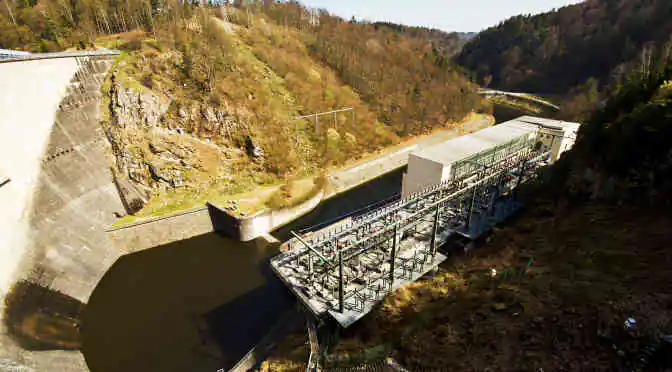The global hydropower market will witness moderate growth as countries continue to attempt to reach carbon reduction goals as set out in the Paris Climate Agreement. In 2016, the demand for hydropower went up, with 31.5 GW of new installed capacity and an estimated global power generation of 4,102 GWh by hydropower. Experts forecast this market’s CAGR to hit a healthy pace by 2020. Technavio lists the top 10 global hydropower companies that are fueling this growth.
Top 10 Global Hydropower Companies:
1) China Yangtze Power Co. Ltd | HQ: Beijing, China
- Capacity of hydropower ranks first globally at 45,495 MW.
- In 2016, CYPC realized power generation of 206.06 TWh.
- Operates 3 of the world’s 12 largest hydropower plants.
- Highest total global hydropower market capitalization of nearly 380 billion RMB.
- Built largest finished hydropower station in the world – Three Gorges Hydropower Station in Sandouping, Yichang City, Hubei Province.
2) Hydro-Québec | HQ: Montreal, Canada
- One of the largest hydropower producers in the world with 60+ hydroelectric generating stations.
- Almost 100% water-generated electricity for residents across Quebec.
- Installed capacity of 36,908 MW.
- Generating fleet composed of 62 hydroelectric generating stations and 24 thermal generating stations – worth $28.6 billion with installed capacity of 36.9 GW.
- Hydroelectric fleet includes 27 large reservoirs with combined storage capacity of 176 TWh, as well as 668 dams and 99 control structures.
3) BC Hydro and Power Authority | HQ: Vancouver, Canada
- Crown corporation, owned by the government and people of British Columbia.
- Generate between 43,000 and 54,000 gigawatt hours of electricity annually.
- Nameplate capacity is about 11,000 MW.
- Includes large-scale dams (Peace and Columbia rivers) that provide upto 90% electricity supply to British Columbians.
- Power Smart Program propels BC Hydro as a global leader in energy conservation.
- Integrated Resource Plan (IRP) outlines long-term steps to meet B.C.’s electricity demand by way of conservation, generation and transmission and existing infrastructure upgrades.
4) Ontario Power Generation Inc. | HQ: Toronto, Canada
- Hydropower accounts for ⅓ of Ontario Power Generation’s electricity production.
- Produced 30.4 TW hours in 2015.
- Operates 66 hydroelectric stations, 29 small hydroelectric plants and 241 dams on 24 river systems.
- Smallest station generates 800 KW and the largest generates more than 1,400 MW.
- New 25 MW generating station being built northeast to Ontario.
- Proposes an expansion of the Ranney Falls Generating Station, which could potentially generate 20 MW of hydropower for Ontario.
5) Duke Energy Corp. | HQ: Charlotte, North Carolina, United States
- 11 generating units at 6 plant sites generate more than 56% of electricity for Duke Energy’s customers in the Carolinas.
- Owns and operates regulated and unregulated power plants in North America.
- Renewable energy capacity grew almost 20% in 2017.
- Grew renewable energy capacity from 5,400 MW to more than 6,400 MW in 2017, powering more than 1 million homes.
- 40% of electric generation put out zero greenhouse gas emissions, which includes hydropower.
- Portfolio includes 31 hydroelectric power stations ranging from 4 MW to 350 MW.
6) Georgia Power Co. | HQ: Atlanta, Georgia, United States
- Customers totalled 2,481,554 at the end of 2016.
- Owns 15 lakes for hydroelectricity generation that also offer thousands of acres of public shoreline access.
- Owns 19 hydroelectric dams with a total capacity of 1,087 MW.
7) Statkraft AS | HQ: Oslo, Norway
- Europe’s largest generator of renewable energy.
- 331 hydropower plants with a total installed capacity 15656 MW.
- Wholly owned by the Norwegian state.
- Owns more than 360 power plants around the world in 16 countries.
- Gross operating revenues of NOK 51.0 billion in 2016.
8) Centrais Elétricas Brasileiras SA | HQ: Rio de Janeiro, Brazil
- The largest Brazilian hydropower company with a generating capacity of about 1/3 of the country’s total installed capacity.
- Capacity of 118,106.20 GWh.
- 90%+ of installed capacity comes from low GHG sources.
- Aims to be among top 3 largest global clean energy companies by 2030.
- Profit of R $ 3.4 billion in 2016 and expected investments of R $ 35.8 billion between 2017 and 2021.
- Owns almost half of the country’s total transmission lines in its basic network, in high and extra-high voltage.
9) Agder Energi AS | HQ: Kristiansand, Norway
- Norway’s 3rd largest hydroelectric production company.
- Agder Energi’s end user company is LOS, Norway’s largest power supplier.
- Has 49 wholly and partly-owned power stations that produce 8.1 TWh annually.
- Provides 195,000 grid-connected customers with clean energy.
- Pays out dividends to the community through a public shareholder format.
10) RusHydro | HQ: Moscow, Russia
- 1 GW installed electricity generation capacity makes RusHydro one of Russia’s largest power generating companies.
- Geothermal power plants in Kamchatka and the highly maneuverable Zagorskaya Pumped Storage Hydropower Plant (PSPP) in the Moscow Region.
- Russian Federation owned 60.56% of RusHydro’s share capital.
- Focuses on hydro resource efficiency, ensuring reliability of the Unified Energy System of Russia and creating conditions for social and economic developments.
- 7% of all Russia’s energy is generated through hydropower.
Global Hydropower Market Research
Technavio offers the latest on the Global Hydropower Market through key research findings and analysis. Gain an expert understanding of the wide range of crucial factors impacting the current market. Don’t miss out on 76 pages of actionable insights and valuable resources. Request your free sample report now and add an asset to your professional toolbox minus the cost.



